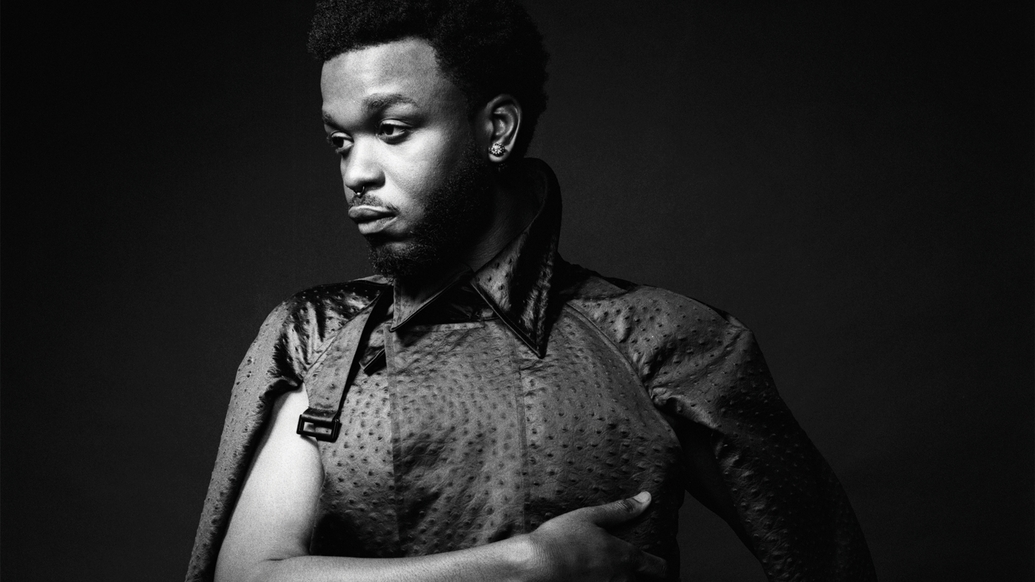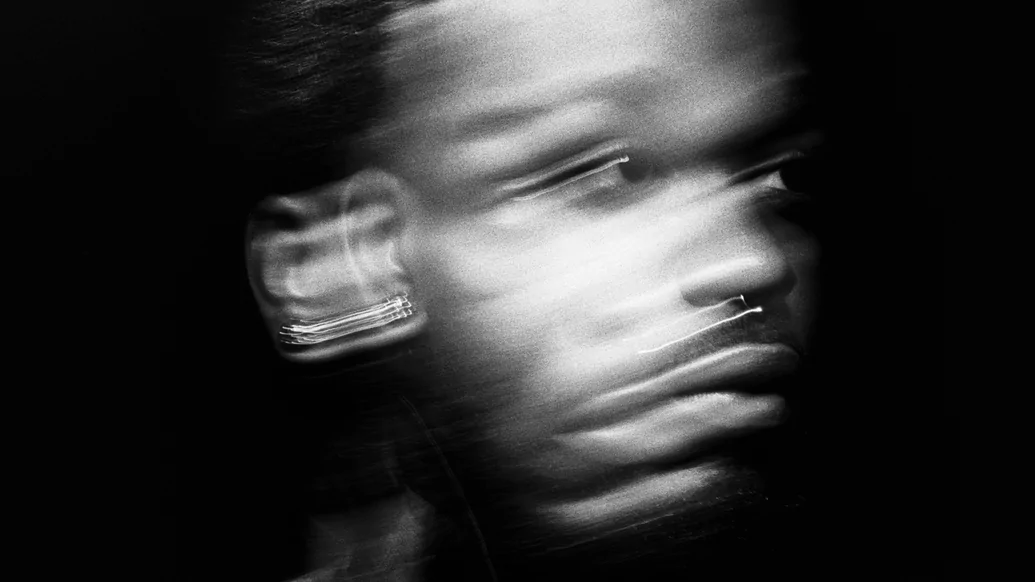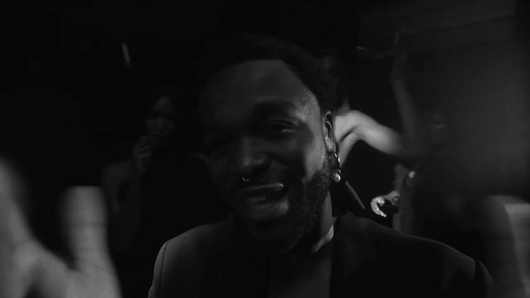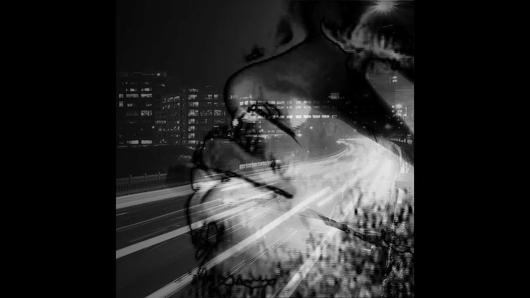
Cakes Da Killa is ready for his close up
Blending hip-hop, house and influences from New York’s ballroom scene, Cakes Da Killa has been opening up the conversation around LGBTQ+ artists in rap. He speaks to Nathan Evans about developing his style, the appropriation of queer and ballroom culture, and finding inspiration in the Harlem Renaissance for his new album ‘Svengali’
In 2014, Cakes Da Killa’s uniquely sharp and agile club rap earned him an interview on New York’s premier hip-hop station, Hot 97. He never thought an openly gay artist would be able to appear on the show. Talking with host Ebro Darden, the interview was marred by ignorance, misunderstanding and a general feeling of discomfort, yet the rapper doesn’t reflect on it negatively. “I think having those uncomfortable conversations is what has changed the tone and set the landscape for where we are now,” he says. Now that queer culture is seeing more positive attention than ever, Cakes is educating about its past through his music and using it as a way to navigate the future.
Born Rashard Bradshaw, he was raised in New Jersey, in the sprawling metropolitan area that dominates the north-east part of the state, but away from main hubs that clubbers will be familiar with for Jersey club. Rather, he heard the scene from a distance while growing up on a diet of ‘90s hip-hop, radio pop, neo-soul, house music and Baltimore club. It wasn’t until after his high school years that he found a nightlife community that he could access.“[I realised] it was closer to go over to New York than to go down there.”
Hopping over the Hudson permanently soon after, Bradshaw could be found indulging in nearly every party establishment in the city, from sports bars to reggae clubs such as Brooklyn’s The Lab. “If I’m gonna pay this rent, I’m gonna actually enjoy the city!” he exclaims. Chiefly, he became enamoured with Greenwich Village, known as ‘the Village’, a little pocket where the city’s LGBTQ+ community could commune. “It’s a historic incubator for the girls for good and bad reasons. You have a lot of teenagers and even younger people who are thrown out of their homes for being themselves. That’s the safe refuge.”
The Village is where Bradshaw would get up close and personal with ball culture — a multi-disciplinary art movement that encompasses dance (voguing), fashion (drag) and music (DJing and MCing). A source of pride and unity for queer people of colour, these disciplines congregate into ceremonies that exhibit opulence through competitive dance. Amongst the glamorous drag and competitive voguing, Bradshaw was drawn to the MCs that hosted and hyped up the balls.
“Not only do they keep the party going, they introduce the categories, they set the tone for what’s going on,” he explains. “They’re there for comedic relief and they add the seasoning to whatever broth is going on.” He goes on to show love to those MCs who affected his style. “MCs like Kevin JZ Prodigy and Jay Pendarvis are quick on a beat; that humorous, witty flow is what influenced my rapping style. The same way I can be inspired by Foxy Brown, the ballroom and MCing is what instilled that love of quick wittiness in me.

“There are still people that go to the Village [after being] thrown out of their houses every day. Ballroom is not just a buzzword right now for a Beyoncé record. People need to respect that and know that this community was founded on the backs of trans women, and came from Black and brown people in New York.”
Though not a ballroom MC, he presents that wit and flow in all his music, from his early albums from the mid-2010s and lauded mini-series of ‘Muvaland’ EPs made over the past two years, to his new album ‘Svengali’. Short but lyrically dense, the album sees Cakes Da Killa bathe in sultry deep house, while delivering unbreakable raps that twist similes to flex his allure, flaunt his fashion and seduce the object of his fascination. Shelved before its first planned rollout due to Covid, it’s the culmination of the past few years of stellar verses that have earned him anew height of critical acclaim, if an unintentional one.
Narratively, ‘Svengali’ is a series of vignettes that piece together into a tale about cosmopolitan love in the Village. Based on true events, Bradshaw strived to make it as genuine as possible. “A lot of the voice notes on the record are real. I had to hit up exes and flings and be like, ‘Can I use this?’” he says, teeth gritting through reimagined awkwardness. “My music is cathartic, and I wanted to present the story fully. And it makes for a good piece, no shade!” he cackles.
While ‘Svengali’ is about events in the more recent past, it is also a layered tribute to the Harlem Renaissance movement of the 1920s. Emerging from African-Americans who were two generations out from slavery and migrated to Harlem as a refuge from the South, they used the arts to express tension, freedom and joy. This resulted in boundary-pushing jazz, blues, cabaret and literature, and evolved Black art in politically bold and aesthetically dazzling ways.
But many overlook the queer undertones of the movement, as Bradshaw points out. “I was watching a movie called Brother To Brother when I first heard of Richard Bruce Nugent, and his writing style and the storytelling of the era represented Black people that love on Black people,” he explains. “It was a hush-hush thing, but he was the first author to write explicitly about gay relationships. I was like, ‘Oh, that’s so punk!’” It should be no surprise that the Harlem Renaissance is where ball culture began to thrive, too.
Bradshaw’s admiration for this era of Black New Yorkers glows when he speaks about it, and throughout every element of his new album. From the jazzy chords that paint tracks such as ‘Sip Of My Sip’ and ‘Ball And Chain’, to the noir visuals that call back to films such as Looking For Langston, it shows Bradshaw as not just an MC, but a historian who wishes to pick up where his cultural ancestors left off. “[The Harlem Renaissance] was a time where a lot of Black queer creatives were coming together and sharing ideas, which I feel is very reminiscent of what’s happening now,” he explains. “A lot of the concepts we see now like non-binary and playing with gender is nothing new."

“I think the world is finally ready for what I do, and now it’s gonna be the moment.”
The difference now is that the world is more open to them, yet this has awakened a new issue. The release of Beyoncé’s ‘Renaissance’ earlier this year reinvigorated an ongoing debate over whether the mainstreaming of ball culture will present a net positive for the scene’s creators, or put it at risk of becoming misrepresented or appropriated. “Obviously, you do not want to sell a community limb by limb for mass consumption,” he considers. “But, there are people in the community who are talented choreographers, stylists and make-up artists who also deserve to be put in front of the camera.”
Bradshaw sees a lot of misinterpretation and watering down of queer culture that could be easily prevented. “You have people coming into the scene because they feel comfortable to, but it’s not a trend to the actual people,” he explains. “There are still people that go to the Village [after being] thrown out of their houses every day. Ballroom is not just a buzzword. People need to respect that and know that this community was founded on the backs of trans women, and came from Black and brown people in New York. The understanding would be more seamless if people did the research rather than just watching Drag Race.”
So far, mainstream productions of ball culture have done well to reference its history, but the onus is on the viewer or listener to learn its history to get a deeper understanding. Meanwhile, Cakes DaKilla, who has cemented his place in the vanguard, is ready to enjoy the fruits of his labour. “I think it’s just getting started,” he says, relieved. “I think the world is finally ready for what I do, and now it’s gonna be the moment.”








